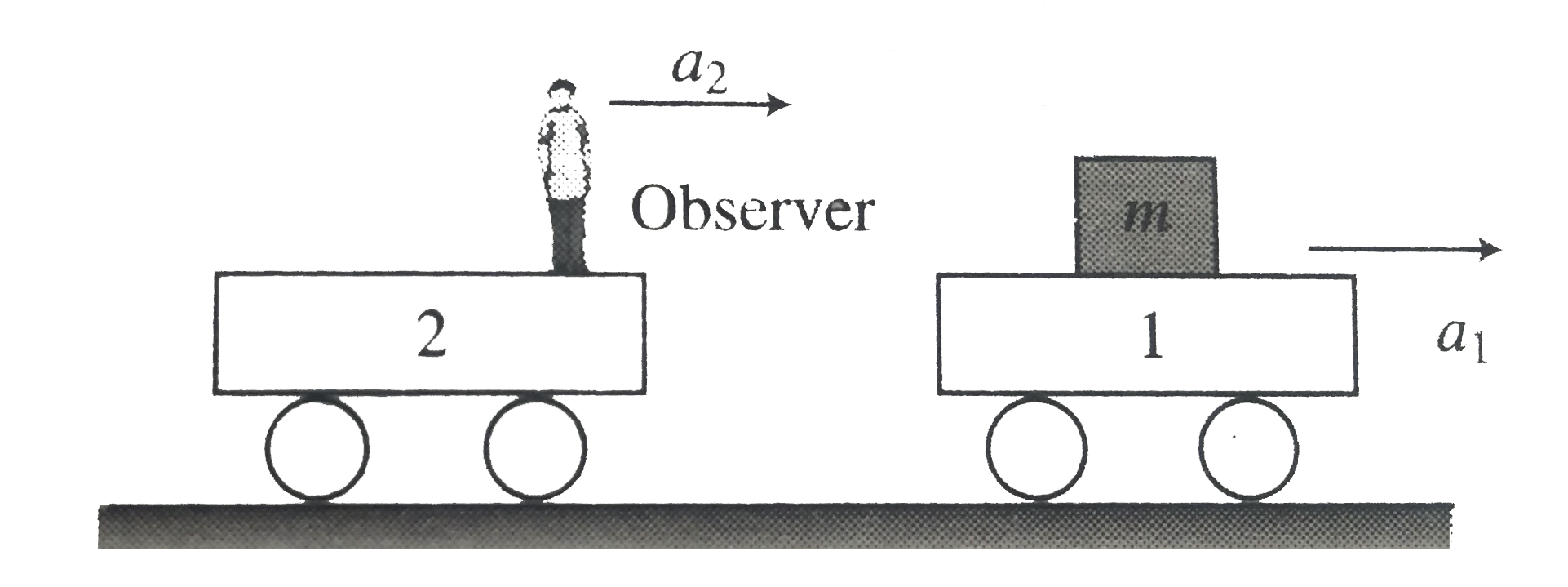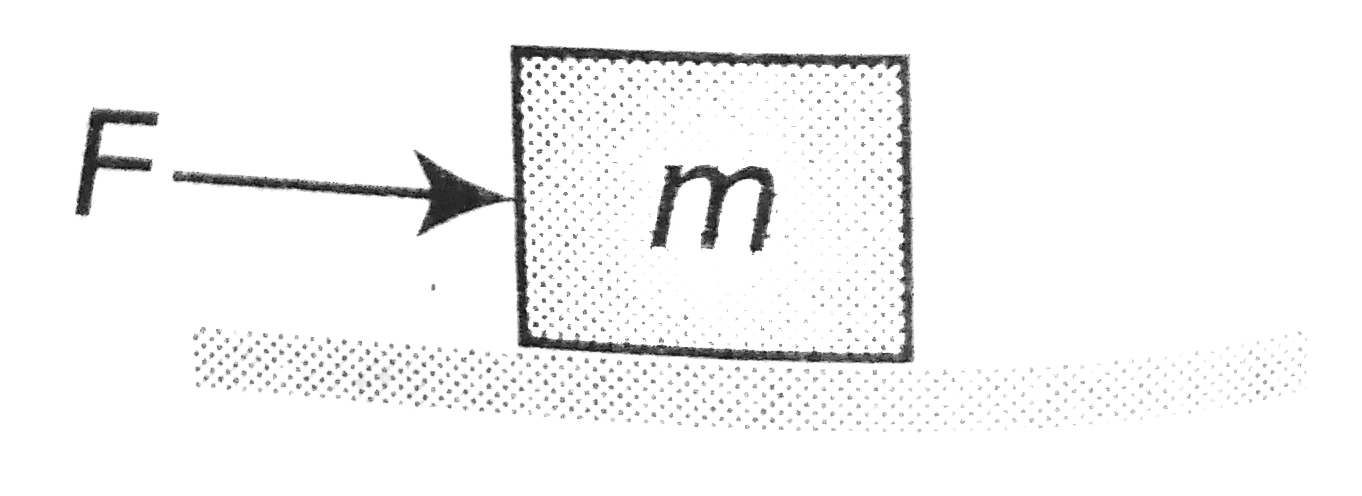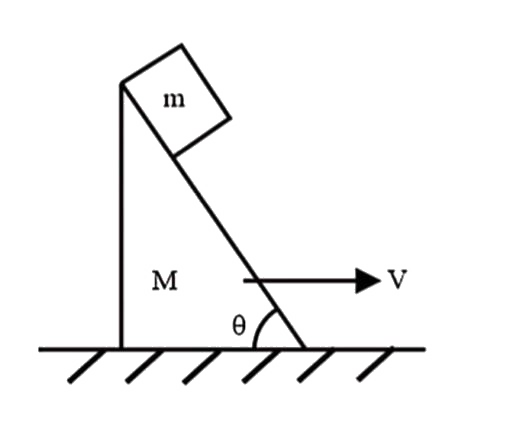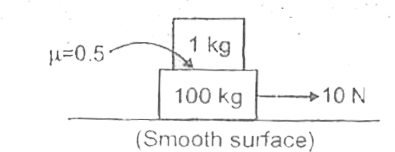Two trolley 1 and 2 are moving with acceleration and respectively, in the same direction. A block of mass m on trolley 1 is in equilibrium from the frame of observer stationary with respect to trolley 2. the magnitude of friction force on block due to trolley is (assume that no horizontal force other than friction force is acting on block).

Data insufficient
The correct Answer is:B
Since m is in equilbrium w.r.t. observer, acceleration of m should also be . So net friction force (as there is no other horizontal force on m) acting on m should be mass acceleration =.
Topper's Solved these Questions
- NEWTON'S LAWS OF MOTION 1Book:CENGAGE PHYSICSChapter:NEWTON'S LAWS OF MOTION 1Exercise:Multiple Correct
Explore 11 Videos
- NEWTON'S LAWS OF MOTION 1Book:CENGAGE PHYSICSChapter:NEWTON'S LAWS OF MOTION 1Exercise:Assertion-reasoning
Explore 15 Videos
- NEWTON'S LAWS OF MOTION 1Book:CENGAGE PHYSICSChapter:NEWTON'S LAWS OF MOTION 1Exercise:Subjective
Explore 15 Videos
- MISCELLANEOUS VOLUME 2Book:CENGAGE PHYSICSChapter:MISCELLANEOUS VOLUME 2Exercise:INTEGER_TYPE
Explore 10 Videos
- NEWTON'S LAWS OF MOTION 2Book:CENGAGE PHYSICSChapter:NEWTON'S LAWS OF MOTION 2Exercise:Integer type
Explore 1 Video
Similar Questions
Knowledge Check
A horizontal force F acts on the block of mass m and the block remains stationary, thr value of friction force is.
 AμmgBμmg−FCFDzero
AμmgBμmg−FCFDzeroIf the mass of block is 1 kg and a force of 10 / √3 N is applied horizontally on the block as shown in the figure . The frictional force acting on the block is :
 AzeroB10√3NC20√3ND5 N
AzeroB10√3NC20√3ND5 NA block of mass m=2kg is placed in equilibrium on a moving plank accelerating with a=1m/s2 . If coefficient of friction between plank and block μ=0.2 . The friction force acting on theblock is:
A2NB4NC3NDNone of these
A block of mass m is stationary with respect to the wedge of mass M moving with uniform speed v on horizontal surface. Work done by friction force on the block in t seconds is

View SolutionThe acceleration a of trolley so that block of mass m remains stationary with respect to rough trolley as shown in the figure, is m Trolley 0 - ...
View SolutionTwo persons of mass m1 and m2 are standing at the two ends A and B respectively, of a trolley of mass M as shown.

When the person standing at A jumps from the. trolley towards left with ure1 with respect to the trolley, then
View SolutionA block of mass m is kept on a horizontal table. If the static friction coefficient is μ., find the frictional force acting on the block.
View SolutionA block of mass m=2kg is placed in equilibrium on a moving plank accelerating with a=4m/s2 . If coefficient of friction between plank and block μ=0.2 . The friction force acting on the block is:
View Solution



